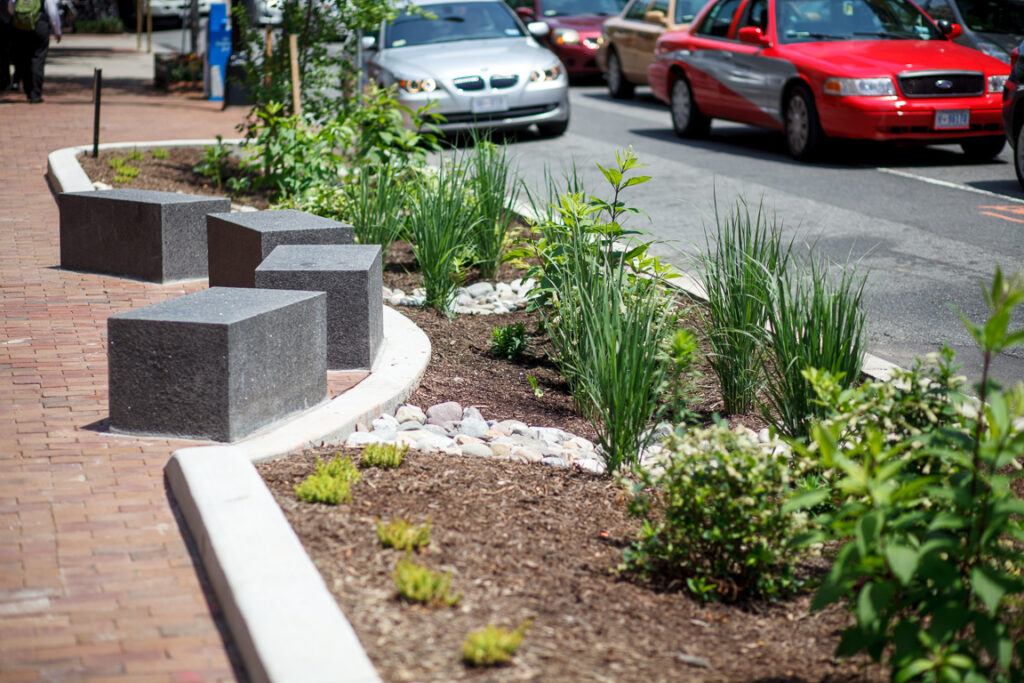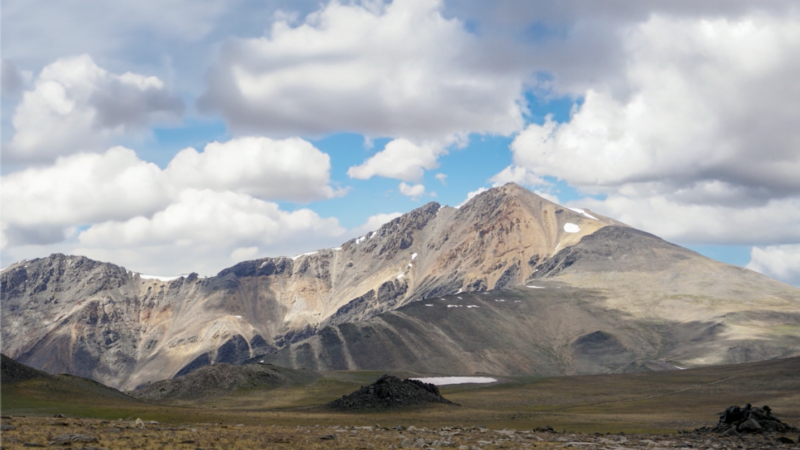
Story
Not just homeowners — businesses need sustainable landscaping too
Pacific Institute study, with UCLA doctoral student Sonali Abraham, looks at hurdles and solutions to bringing businesses up to speed on climate appropriate landscaping.
California is coming off the heels of an exceptionally wet February which saw multiple atmospheric rivers drench the state. But this a land of extremes, and while the state is flush with water now, we’re coming off a historic drought and another is all but inevitable.
Responding to the drought in April 2015, Governor Jerry Brown ordered mandatory water use reductions for the first time in California’s history.
Outdoor watering of lawns and landscapes accounts for roughly half of California urban use overall, and more in inland areas, where summers are hotter and lots are typically large. Policymakers targeted the problem with incentive programs for homeowners to install drought-tolerant or native landscaping.
Commercial lands can be water sustainable, too. A new study from the Pacific Institute surveyed businesses within the Santa Ana River watershed and laid out the challenge of getting more businesses to save water.
Sonali Abraham, report co-author and a doctoral student in environmental science and engineering at UCLA, said pressures of climate change, population growth and aging infrastructure mean comprehensive landscaping changes are needed.
“We need to rethink our urban spaces and change the way sustainable landscapes are thought of,” Abraham said.
The business community could prove an important ally, but there are hurdles to overcome.
For starters, the paper found businesses lack a comprehensive understanding of all the benefits of sustainable landscapes. This affects their financial analyses of such landscapes. Developing case studies and cost-benefit analyses could help fill that information gap. And although there are focused programs for residents, a lack of incentives for business owners may encourage inaction. Developing targeted and tailored incentive programs and policies that motivate businesses held back by the price tag of installing climate-appropriate plants would help, the authors wrote.
Businesses looking to implement sustainable landscaping projects must also overcome California’s notorious red tape. Permitting and regulatory requirements may dissuade business owners from making sustainable landscaping changes. Simplifying and standardizing approval processes could supplement and contribute to incentive programs.
While most big corporations now have entire departments devoted to sustainability, these challenges are particularly tough for small businesses that have limited staff and resources.
Heather Cooley, lead author of the study and director of research at Pacific Institute, said that while climate change makes water conservation more urgent, it also offers motivation.
“Climate change is helping communities look at how to better manage their resources and think about local solutions,” Cooley said.
Cooley oversees Sonali Abraham, who is on residency at the Pacific Institute, where she conducts research to address challenges related to water supply, quality and governance, with a focus on Southern California.
The benefits of sustainable landscaping are plentiful, Abraham said. For example, replacing grass lawns with climate-appropriate plants not only saves water, it increases water quality benefits by reducing fertilizer and pesticide runoff. And installing bioswales can improve water quality, reduce localized flooding and recharge groundwater.
The benefits from sustainable landscaping extend beyond water. The study noted that reducing water use with climate-appropriate plants also reduces the amount of energy used to extract, treat and distribute water. These landscapes also increase green spaces in communities.
For now, however, urban areas and businesses have a long way to go. This February’s rains dumped 18 trillion gallons of rain on California. Most of it is lost and flows into the Pacific Ocean. Sustainable landscaping could have curtailed some of that loss.
Top Image: One of the Golden Triangle’s rain gardens in Washington D.C.




